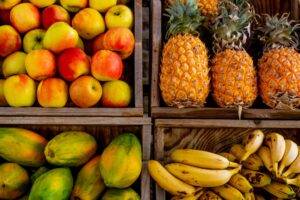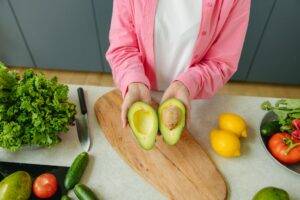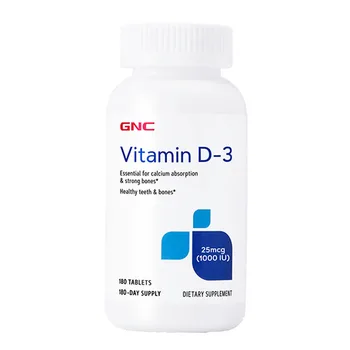Best foods for a healthy diet and for weight loss
I am Dr Rena McDermott and welcome to the Healthsource 411(HS411) blog. Today I will talking about how to choose the best nutrient-rich foods.
Let’s talk a little bit about the American diet and the issues we face with nutritional balance. The U.S. Department of Agriculture estimates that 57 percent of the our caloric intake comes from processed plant foods, 32 percent of our calories comes from animal foods, and only 11 percent comes from whole grains, fruits, vegetables, beans, and nuts. About 35% of adults in the U.S. are obese, and it is estimated that this number will increase to almost 50% within 15 years.
Medical evidence suggests that the American diet has a negative impact on our overall health as well as brain function. A diet high in fat and sugar, contributes to decreased insulin sensitivity, heart disease, and it is also associated with greater incidence of depression, impaired learning and memory.
What should your daily diet look like? A daily diet should have a balance of complexed carb, healthy fats, and proteins. In an ideal situation, daily dietary intake should include fruits, vegetables, whole grains, and legumes as the bulk of each meal with proteins and healthy fats.

I created a list with a variety of nutrient-rich foods that are sources of essential vitamins and minerals:
Folic Acid: spinach, asparagus, black beans, garbanzo beans, pinto beans beets, lentils, papaya (Folic Acid plays an important role in the development of red blood cells which is why it’s an especially important nutrient for sickle cell patients)
Vitamin C: Kiwis, oranges strawberries, white potatoes, cabbage, broccoli
Vitamin E: mustard greens, almonds, hazelnuts, wheat germ oil, mangoes, blackberries, sunflower seeds
Vitamin D: Sun exposure, salmon
Carotenoid: carrots, yams, sweet potatoes, spinach, kale, broccoli, cantaloupe, bell peppers
B12 vitamin: Snapper baked, steamed shrimp, baked salmon, calf’s liver, supplements (for vegetarians)
Magnesium: spinach, mustard greens, pumpkin seeds
Phosphorus: almonds, lentils, milk, yoghurt cheese, eggs, beef, chicken, turkey, fish
Zinc: spinach, broccoli, asparagus
High in fiber: broccoli, cauliflower, raspberries, flax seeds, green beans, eggplant
Calcium: leafy green vegetables, spinach, mustang greens, collard green, turnip greens, kale, oranges, salmon, soy milk, tofu
Protein-rich foods: eggs, fish, chicken, meats, beans or tofu and nuts or seeds.
Dried fruit: raisins, prunes, dates
Grains: quinoa, oatmeal, buckwheat

My favorite superfood is Avocado! I can’t get enough of it!
- It is everything!
- Avocado is a superfood because it is a great source of nutrients including folate, magnesium, potassium, riboflavin (B2), Niacin (B3), panthothenic Acid (B5), vitamin E, copper, Pyridoxine (Vitamin B6), and vitamin C. I pureed avocado with ripe banana for my kids when they were younger, and they loved it. It is a staple in their diet. This is a MUST in our house!
- Quinoa I like as a substitute for rice
- Oatmeal is in regular rotation in my house. I make porridge for my kids with oatmeal almost daily!
- Mangoes are also a favorite in my house. They are sweet and packed with nutrition.
- Bananas, berries, broccoli, spinach, and kale are also on my favorite list.
So what are the take away points from this:
1.Eat lots of fruits and vegetables.
2. Consume calcium-rich foods and beverages such as milk, cheese.
3. Eat more nutrient-rich, high-energy foods (dried fruit, nuts and nut butters are good to keep in your dietary rotation list).
4. Vitamin D supplementation might be needed if you are not getting enough sun or you are not getting enough vitamin D in your diet. Oral vitamin supplementation is controversial regarding how effective it is due to limitations with absorption. This should be discussed with your doctor.

5. And last but not least, hydrate! Drink lots of water. That is a MUST!
Follow me on pinterest and Youtube for more health tips!
REFERENCES
- U.S. Department of Health and Human Services and U.S. Department of Agriculture. 2015 – 2020 Dietary Guidelines for Americans. 8th Edition. Available at http://health.gov/dietaryguidelines/2015/guidelines/(2015).
- Centers for Disease Control and Prevention. Adult obesity facts. http://www.cdc.gov/obesity/data/adult.html.



Leave a comment